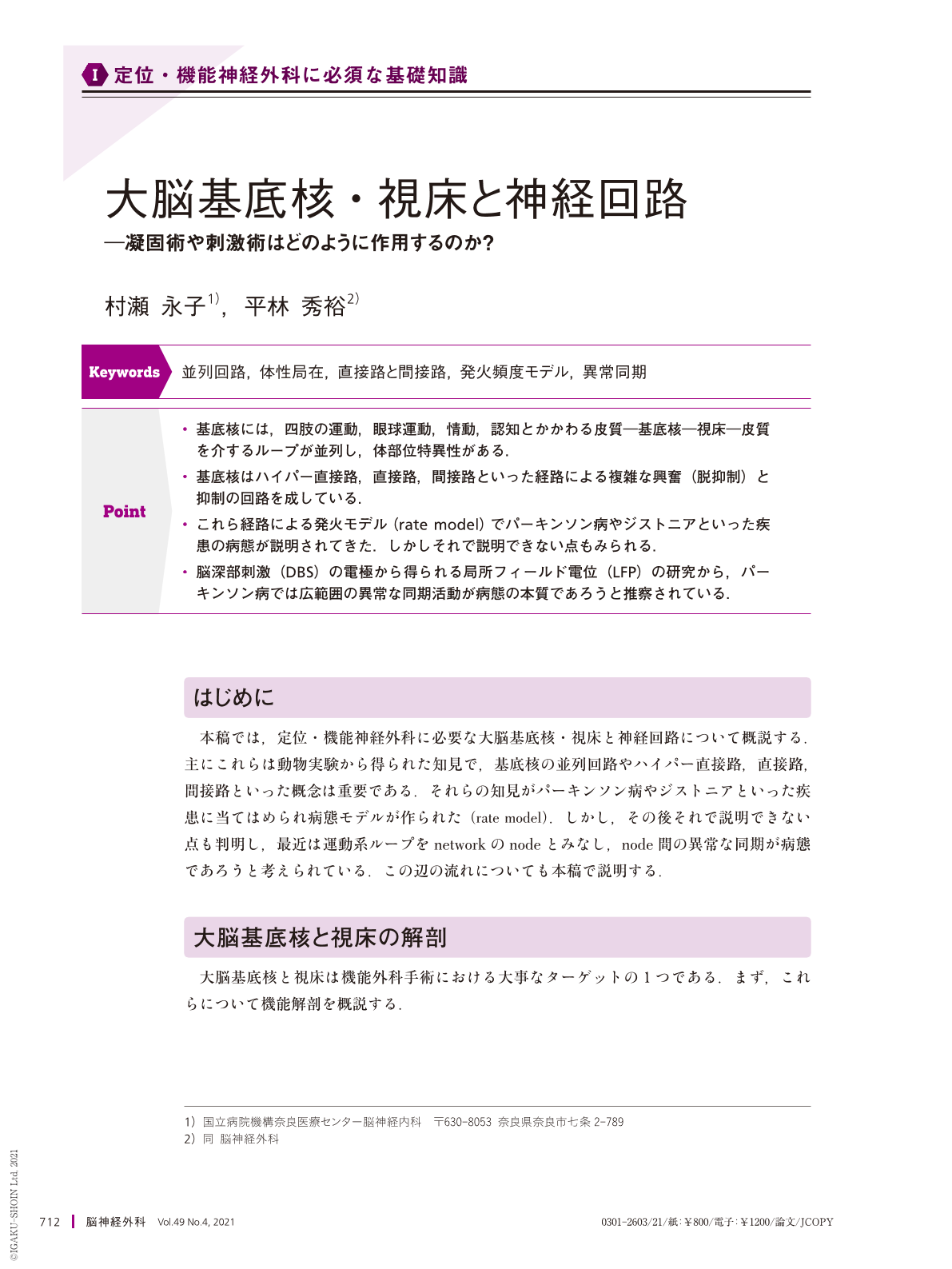Japanese
English
- 有料閲覧
- Abstract 文献概要
- 1ページ目 Look Inside
- 参考文献 Reference
Point
・基底核には,四肢の運動,眼球運動,情動,認知とかかわる皮質—基底核—視床—皮質を介するループが並列し,体部位特異性がある.
・基底核はハイパー直接路,直接路,間接路といった経路による複雑な興奮(脱抑制)と抑制の回路を成している.
・これら経路による発火モデル(rate model)でパーキンソン病やジストニアといった疾患の病態が説明されてきた.しかしそれで説明できない点もみられる.
・脳深部刺激(DBS)の電極から得られる局所フィールド電位(LFP)の研究から,パーキンソン病では広範囲の異常な同期活動が病態の本質であろうと推察されている.
The basal ganglia(BG)is composed of four parallel loops: the motor, oculomotor, associative, and limbic loops. The motor loop starts from the cortex, travels through the BG and thalamus, and returns to the same area of the cortex with somatotopic organization. The striatum is the major input nucleus of the cortex, and the internal segment of the globus pallidus(GPi)is the main output nucleus. BG is explained by the direct and indirect pathways, and these excitatory or inhibitory pathways are used for several disease models. In Parkinson's disease(PD), dopamine deficiency acts on both direct and indirect pathways to cause the neuronal activity of GPi to becomes disinhibited. Pallidotomy, an effective surgery to improve Parkinsonism, aimed to destroy this hyperactive state. This is based on the rate model. However, a simian PD model with MPTP-treated monkeys exhibited increased GPi activity during effective stimulation of subtalamic nucleus(STN)-DBS, which makes it difficult to explain the pathophysiology of PD based only on the rate model. Instead, the alterative model is now widely prevailing. Local field potentials recorded from the DBS leads implanted in GPi and/or STN uncovered the abnormally synchronized activity in the β range(β oscillation)and abnormal co-synchronization between these nuclei, which is believed to be important in the pathophysiology of PD.

Copyright © 2021, Igaku-Shoin Ltd. All rights reserved.


